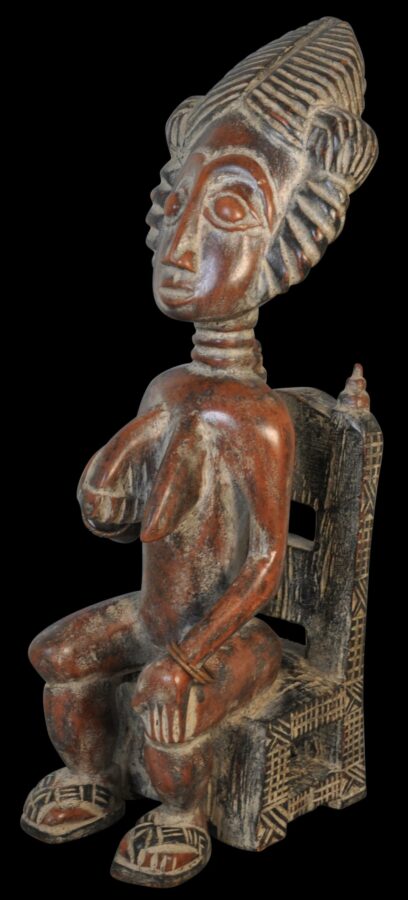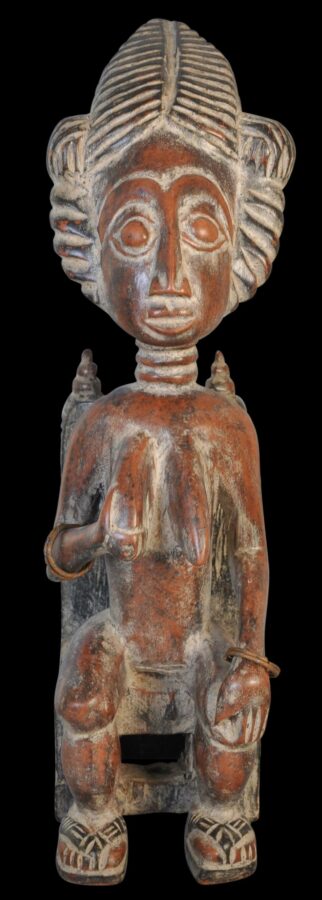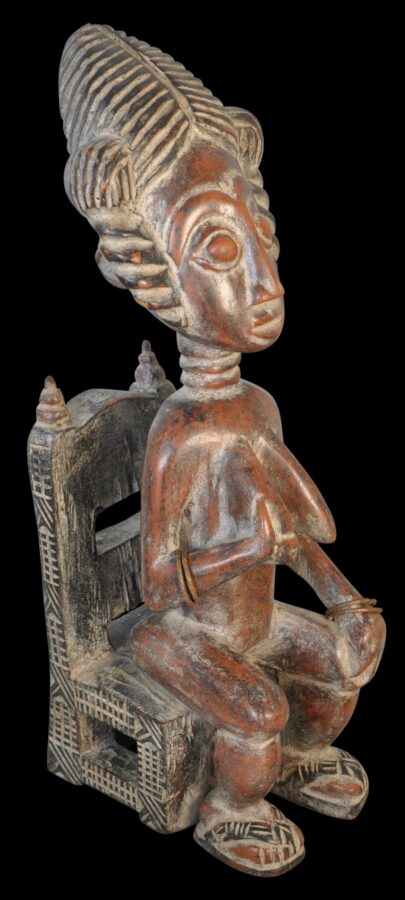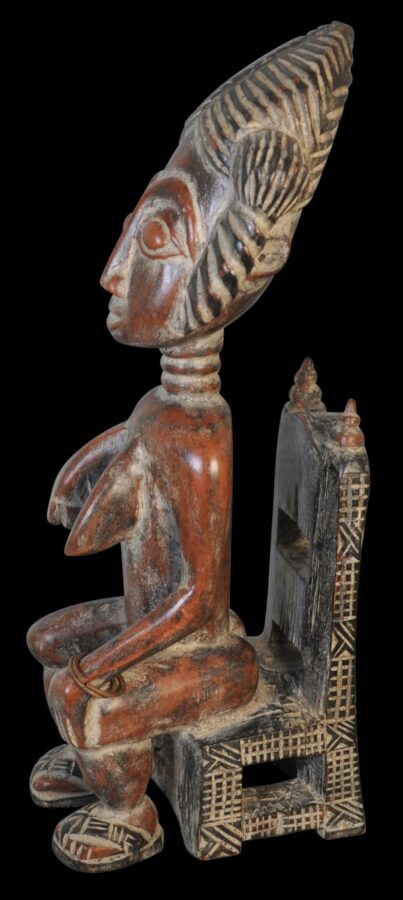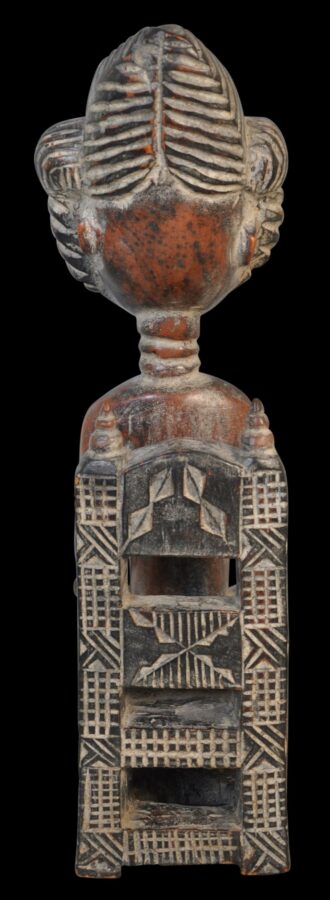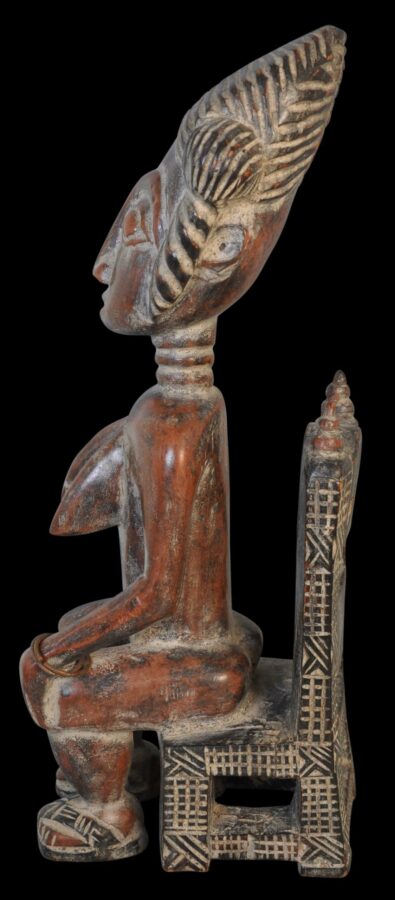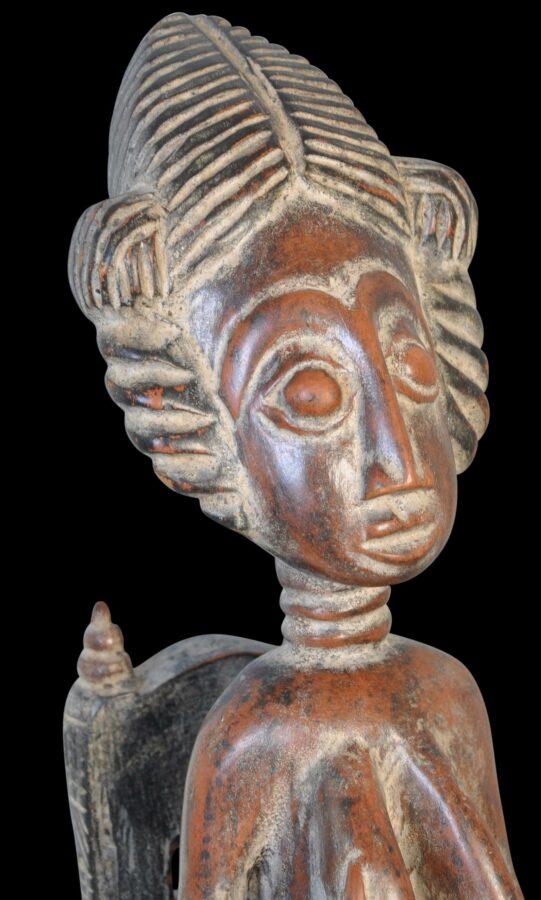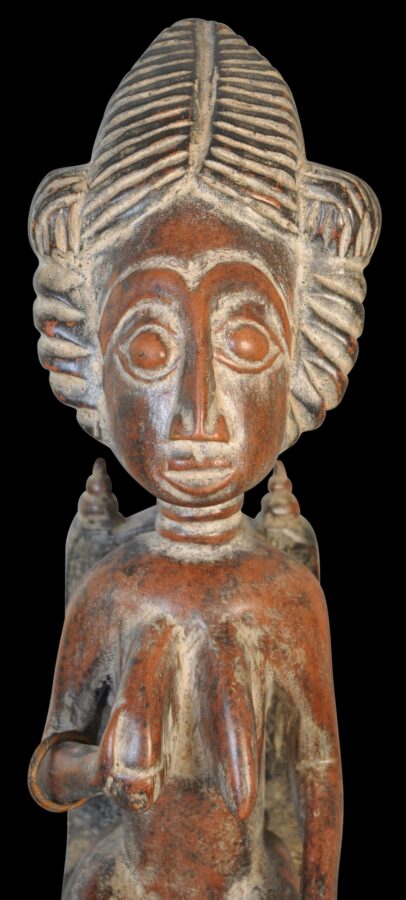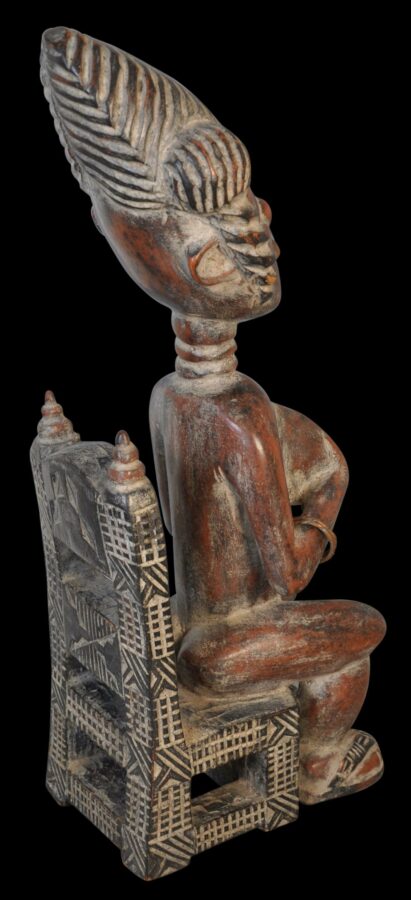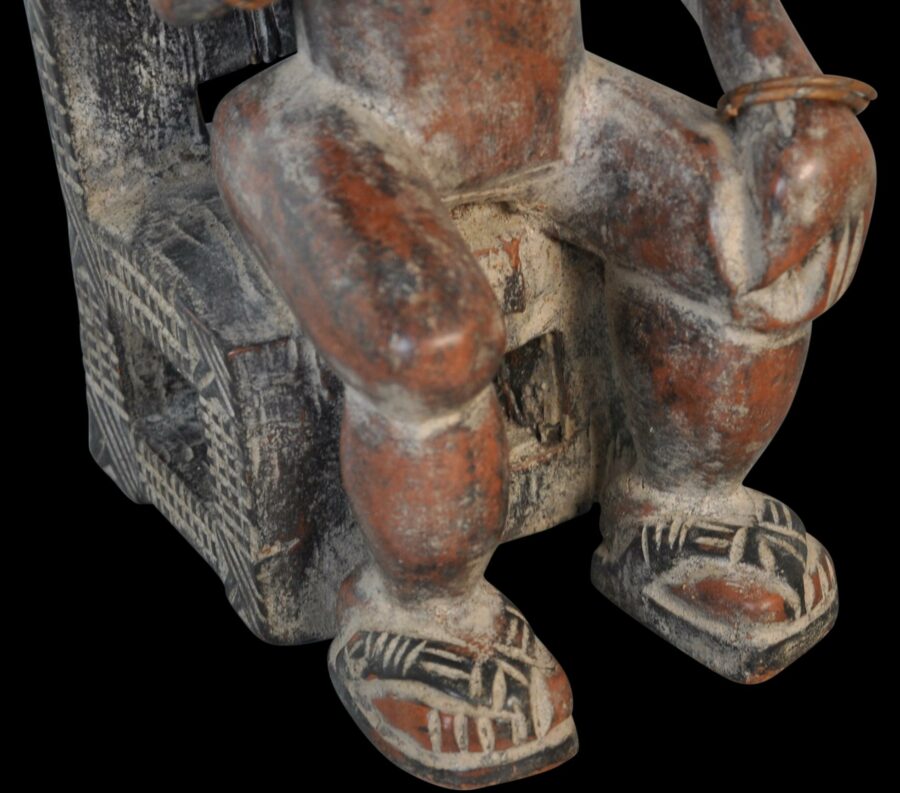Enquiry about object: 9505
Akan Carved Wooden Queen Mother Figure
Asante (Ashanti) sub-group of the Akan people, Ghana early 20th century and possibly earlier
height: 33.1cm, width: 8.5cm, depth: 13.3cm, weight: 635g
Provenance
UK art market
This well-carved female figure shows the figure with an elaborate, courtly hairstyle, with sandals usually reserved for royalty, and seated on an asipim chair, also reserved for royalty. As such the figure most likely is that of a queen.
She has been carved with an elongated face, three neck rings, and wide eyes. She clutches at one of her ample breasts to emphasise her maternal nature. She wears two brass rings on each wrist. These, and the wood from which the figure has been carved, have the most beautiful aged patina, which has also been whitened with chalk. The details of the sandals and asipim chair have been carved with cross-hatching and darkened with pigment.
Mother and mother-and-child images were a common theme for Akan woodcarvers, and served as a universal theme with its associations of nourishment, family and prosperity. Such images were kept on shrines, which overwhelming were concerned with lineage and fertility. This example might have belonged even to a queen mother herself (Cole & Ross, 1977, p, 111). The image here does not show a suckling child – about half such images do and the rest do not – but all are carved to imply suckling.
According to Cole & Ross (1977, p. 111) ‘Generally the woman sits with calm dignity on an ordinary domestic stool, but a few rare sculptures show her on a royal asipim stool whereupon the designation of ‘queen mother’ is appropriate.’
Not all such images are whitened with chalk but this relates to the common Akan practice of affecting powder-white skins on special worship and festival days to show reverence and devotion.
The sculpture was obtained in the UK. The UK was the colonial power in Ghana and so it is likely that the item arrived in the UK during colonial times.
It is a beautiful and well-carved example with a splendid patina.
References
Cole, H. M. & D. H. Ross, The Arts of Ghana, Regents of the University of California, 1977.


